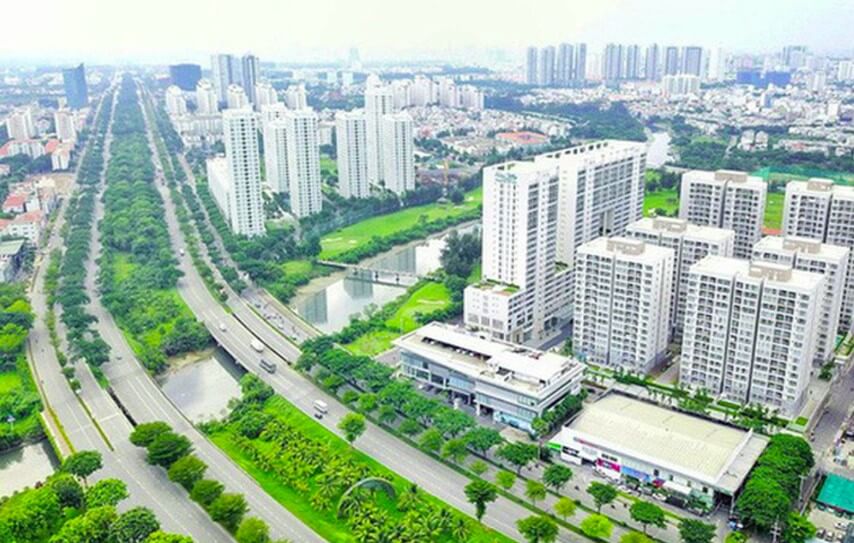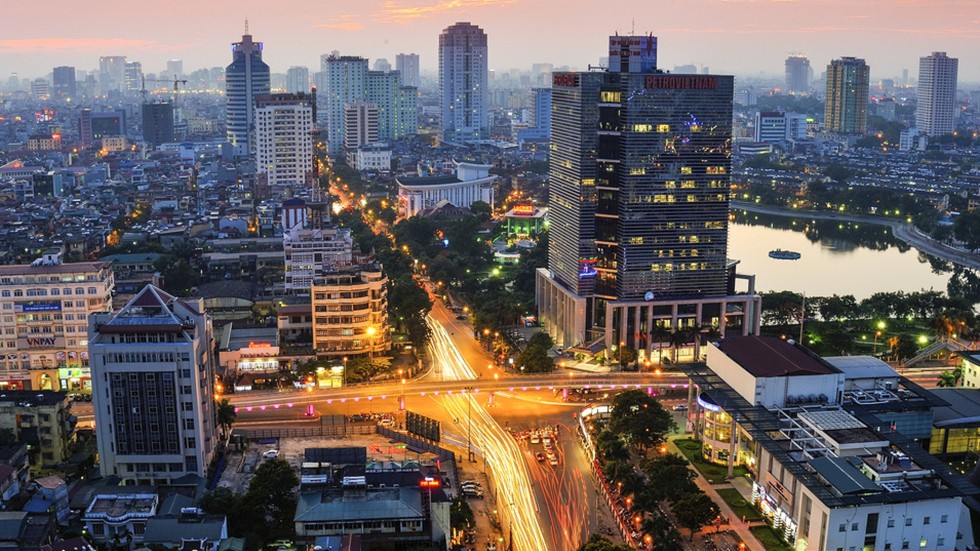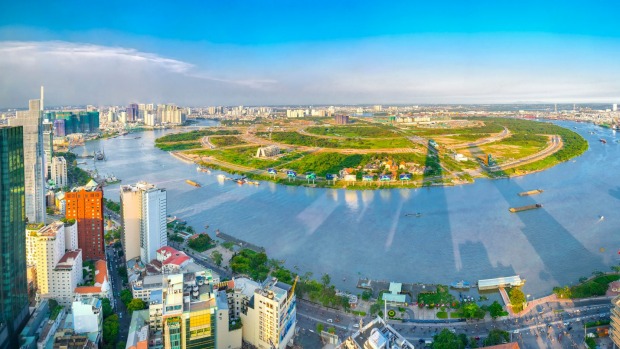Legal regulations on non-agricultural land in Vietnam
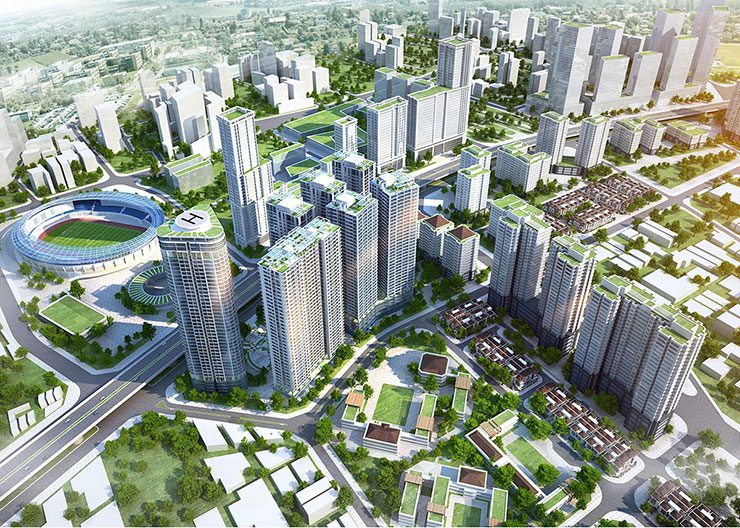
Vietnam land law has specific regulation on non-agricultueal land. Let’s find out this issue with Lawyer X through the following situation: “Dear Lawyer! I want to ask what does non-agricultural land mean in Vietnam? What are regulations on residential land in Vietnam? Thanks for answering me!”
Legal grounds
- 2013 Vietnam Land law
Regulations on residential land in rural areas
– Residential land used by households or individuals in rural areas includes land for construction of houses and facilities for livelihood, gardens and ponds within one land parcel in a rural residential area which is established in accordance with the land use master plan and the master plan for development of rural residential areas already approved by competent state agencies.
– Based on the local land fund and the rural development master plans approved by competent state agencies, provincial-level People’s Committees shall determine the land allocation quota to each household or individual for housing construction in rural areas and the minimum area for the division of a residential land parcel in accordance with local conditions and customs.
– The allocation of residential land in rural areas indicated in the land use master plans and plans must be in synchrony with the master plan for public facilities and public non-business facilities, ensuring convenience for production, people’s life, environmental sanitation and rural modernization.
– The State shall adopt policies to create conditions for rural residents to have accommodation by making full use of the land in existing residential areas and to restrict the expansion of residential areas on agricultural land.
Regulations on urban residential land
– Urban residential land includes land for construction of houses and facilities for livelihood, gardens and ponds within one land parcel in an urban residential area which is established in accordance with the land use master plan and urban construction master plan already approved by competent state agencies.
– Urban residential land shall be allocated in synchrony with land for construction of public facilities and non-business facilities, ensuring environmental sanitation and modern urban landscape.
– The State shall develop land use master plans for the purpose of urban housing construction and adopt policies to create conditions for urban residents to have accommodation.
– Provincial-level People’s Committees shall, based on the land use master plans, urban construction master plans and the local land fund, determine the allocation quota of residential land to each household or individual for their own housing construction in case they are not eligible to be allocated land in an investment project on housing construction; and prescribe the minimum area for the division of a residential land parcel.
– The change of land use purpose from residential land to land for construction of production and business establishments must conform to land use master plans and plans and the urban construction master plan already approved by competent state agencies and with regulations on public order, safety and urban environmental protection.
Land for construction of condominiums
– Land for construction of condominiums includes land for the construction of condominiums, facilities directly serving the life of families living in the condominiums and facilities for public use in accordance with the construction master plan approved by competent state agencies.
– The land master plan for construction of condominiums must be in harmony with the master plans on public facilities and environmental protection.
– The Government shall detail the use of land for construction of condominiums.
Land used for improvement and development of urban areas and rural residential areas
– Land for urban improvement and development includes land for improvement of the existing inner urban areas and land planned for expanding existing urban areas or developing new urban areas.
Land for improvement and development of rural residential areas includes land for improvement of existing residential areas, land which is part of the agricultural land fund for public purposes, and land planned for expanding existing residential areas.
– The use of land for improvement and development of urban areas and rural residential areas must conform to the land use master plans and plans, urban construction master plan and master plan for development of rural residential areas which have been approved by competent state agencies, and with construction standards and regulations issued by competent state agencies
– Provincial-level People’s Committees shall organize the development of projects and assign them to economic organizations, overseas Vietnamese or foreign-invested enterprises for implementation in accordance with law in order to improve or develop new urban or rural residential areas. The land for such projects shall be allocated appropriately in land use master plans and plans for the whole area, including land for construction of infrastructure, residential land, land for public facilities and non-business facilities, land for trading and services and land for non-agricultural production establishments.
When implementing projects on technical infrastructure, development or improvement of urban or rural residential areas, the State shall proactively recover the land which includes land for construction of infrastructure and the nearby area in accordance with land use master plans and plans.
– In case the communities develop or improve their facilities for public purposes based on the contributions of people or the support by the State, the voluntary contribution of land use rights, compensation or support shall be agreed upon by the communities and the land users.
Land for construction of offices and non-business facilities
– Land for construction of offices includes land for construction of offices of state agencies, political organizations and socio-political organizations.
– Land for construction of non-business facilities includes land for construction of non-business facilities in the sectors and fields of economy, culture, society, health, education and training, physical training and sports, science and technology, environment, and foreign affairs and other non-business facilities.
– The use of land prescribed in Clauses 1 and 2 of this Article must conform to the land use master plans and plans, the urban construction master plan and the master plan for development of rural residential areas approved by competent state agencies.
– The heads of agencies or organizations to which land is allocated or leased shall preserve the allocated or leased land and ensure proper land use purposes.
It is forbidden to use the land for construction of offices and non-business facilities for other purposes.
– The State shall encourage the use of land for the purpose of development of culture, health, education and training, physical training and sports, science and technology, and environment.
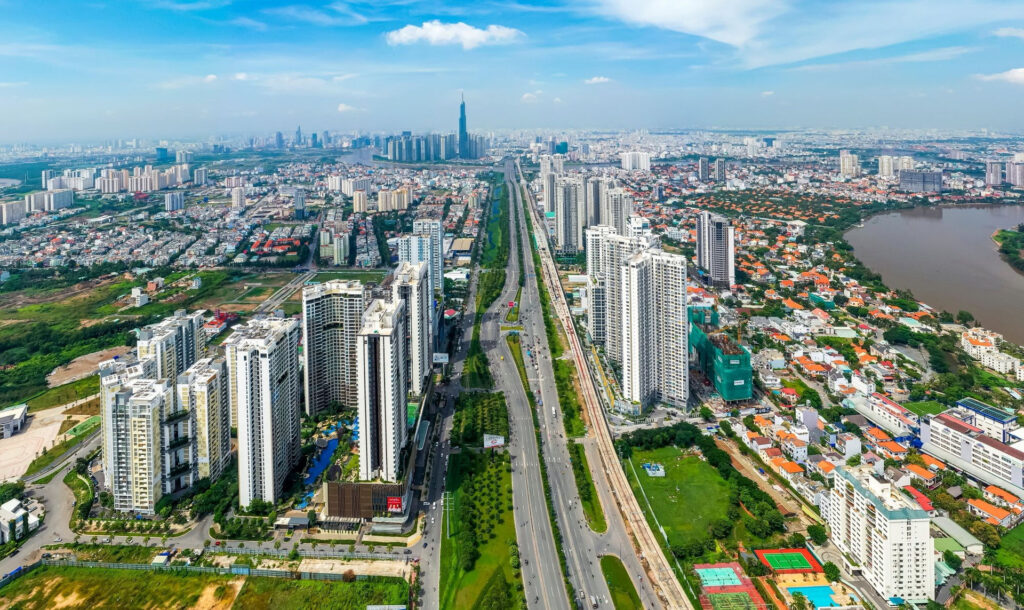
Land for national defense or security purpose
– Land used for national defense or security purpose includes land used in the cases prescribed in Article 61 of Land law.
– Provincial-level People’s Committees shall perform the state management of land used for national defense or security purpose in their localities.
The Ministry of National Defense and the Ministry of Public Security shall coordinate with provincial-level People’s Committees in formulating land use master plans and plans for national defense or security purpose to meet the requirements of socio-economic development and strengthening of national defense and security; review and define the boundaries of land used for national defense or security purpose; and define the areas and locations of land for national defense or security purpose which are no more needed or are improperly used, for handover to the localities for management and use.
– For land areas that are planned for national defense or security purpose but are still not used for these purposes, the current users may continue using the land until the decision by a competent state agency to recover the land is issued, but must not cause deformation to the natural terrain.
– The Government shall detail this Article.
Land for industrial parks, export processing zones, industrial clusters and trade villages
– The use of land for construction of industrial parks, export processing zones, industrial clusters or trade villages must conform to land use master plans and plans and detailed construction master plans approved by competent state agencies.
During the planning and establishment of industrial parks or export processing zones, the planning and construction of housing areas and public facilities outside the industrial parks or export processing zones to serve the life of workers in industrial parks or export processing zones must be carried out simultaneously.
– The State shall lease the land to economic organizations, overseas Vietnamese or foreign- invested enterprises to invest in construction and commercial operation of infrastructure of industrial parks, industrial clusters and export processing zones. For the land area that is leased with annual rental payment, the lessee may sublease that land with annual rental payment. For the land area that is leased with full one-off rental payment for the entire lease period, the lessee may sublease that land with full one-off rental payment for the entire lease period or annual rental payment.
Investors are entitled to exemption from land rental for the land used for construction of infrastructure for common use in industrial parks, industrial clusters or export processing zones.
– Economic organizations, households, individuals, overseas Vietnamese and foreign- invested enterprises that invest in production and business in industrial parks, industrial clusters or export processing zones are entitled to sublease land together with infrastructure from other economic organizations, overseas Vietnamese or foreign-invested enterprises that have invested in the construction and commercial operation of infrastructure, and have the following rights and obligations:
+ In case of subleasing land with full one-off rental payment for the entire lease period, they have the rights and obligations prescribed in Article 174 of Land law;
+ In case of subleasing land with annual rental payment, they have the rights and obligations prescribed in Article 175 of Land law.
– Land users in industrial parks, industrial clusters or export processing zones shall use land for the determined land use purposes, be granted a certificate of land use rights and ownership of houses and other land-attached assets, and have the rights and obligations prescribed in Land law.
– Economic organizations, households, individuals or overseas Vietnamese that invest in production and business in industrial parks, industrial clusters or export processing zones and have been allocated land by the State or acquired land use rights together with infrastructure from other economic organizations or overseas Vietnamese that have invested in the construction and commercial operation of infrastructure of industrial parks, industrial clusters or export processing zones prior to the effective date of Land law, may continue using the land for the remaining project duration without having to change to lease land. At the expiry of the project duration, if these subjects still have demand, the State shall consider leasing land to them in accordance with Land law.
– The Government shall detail this Article.
Land used for mining activities
– Land used for mining activities includes land used for mineral exploration, exploitation and processing, land for auxiliary facilities for mining activities and safety corridors in mining activities.
– Land used for mineral exploration and exploitation shall be leased by the State to organizations, individuals, overseas Vietnamese or foreign-invested enterprises that are permitted to carry out projects on mineral exploration and exploitation.
Land used as ground for mineral processing falls under the type of non-agricultural land for production and business purposes with the same land use regime as for the land for trading and services or non-agricultural production establishments as prescribed in Article 153 of Land law.
– The use of land for mining activities must comply with the following provisions:
+ Having a license for mining activities and a decision on land lease for mineral exploration and exploitation or a decision on lease of land as mineral processing ground, granted by a competent state agency according to the Government’s regulations;
+ Taking measures for environmental protection, waste treatment and other measures to avoid causing damage to other land users in the area or the surrounding areas;
+ The use of land must be in line with the progress of mineral exploration and exploitation. Land users shall return the land in accordance with the progress of mineral exploration and exploitation and with the status of surface soil as stipulated in the land lease contract;
+ If the mineral exploration and exploitation do not require the use of surface soil or do not affect the use of the ground, there is no need to lease the surface soil.
Land used for trading and services; land for non-agricultural production establishments
– Land used for trading or services includes land used for construction of trading or service establishments and other facilities serving trading or services.
Land used for non-agricultural production establishments includes land used for construction of non-agricultural production establishments that are located outside industrial parks, industrial clusters or export processing zones.
– The use of land for trading, services and non-agricultural production establishments must be in line with land use master plans and plans, urban construction master plan and master plan for development of rural residential areas which have been approved by competent state agencies, and with regulations on environmental protection.
– Economic organizations, households or individuals may use land for trading, services or for non-agricultural production establishments, which is the land obtained through leasing land from the State, acquiring land use rights, leasing or subleasing land or receiving land use rights contributed as capital from other economic organizations, households or individuals, or from overseas Vietnamese, or subleasing land together with infrastructure from foreign-invested enterprises.
Overseas Vietnamese may use land for trading, services or non-agricultural production establishments, which is the land obtained through leasing land from the State, or leasing or subleasing land from other economic organizations, households or individuals, or from other overseas Vietnamese, or subleasing land together with infrastructure from foreign-invested enterprises. Overseas Vietnamese who are defined Clause 1, Article 186 of Land law are also entitled to obtain land through inheritance or donation of land use rights to use for construction of trading, services or non-agricultural production establishments.
Foreign-invested enterprises may use land for trading, services or non-agricultural production establishments, which is the land obtained through leasing land from the State, or leasing or subleasing land from economic organizations or overseas Vietnamese, or subleasing land together with infrastructure from other foreign-invested enterprises.
Land used for production of construction materials and ceramic products
– Land used for production of construction materials and ceramic products includes land, land with surface water for material exploitation and land used as ground for processing and producing construction materials and ceramic products.
The use of land for exploiting raw materials for manufacturing bricks, tiles or ceramic products must take advantage of hilly land, uncultivated hillocks, abandoned land, land in riverbed or ponds or lakes that need to be dig deep, land along the rivers not being used for agricultural production, soil dikes no longer in use, or land from rehabilitation of rice fields.
– Land or land with surface water used for exploiting raw materials shall be leased by the State to households or individuals that are permitted to exploit raw materials for the production of construction materials and ceramic products; to economic organizations, overseas Vietnamese or foreign-invested enterprises that are licensed to implement investment projects on exploitation of raw materials for production of construction materials and ceramic products.
Land used as ground for production of construction materials and ceramic products falls under the type of non-agricultural land for production and business purposes with the same land use regimes as for trading, services or non-agricultural production establishments as prescribed in Article 153 of Land law.
– The use of land for production of construction materials and ceramic products must comply with the following provisions:
+ Having a decision on land lease for the purpose of exploitation of raw materials, processing and production of construction materials and ceramic products issued by a competent state agency;
+ Taking necessary measures to avoid causing damage to production activities, life and negative effects to the environment, water flows or transportation;
+ Land users shall return the land in accordance with the progress of exploitation of raw materials and with the status of surface soil as stipulated in the land lease contract.
– It is forbidden to use land of the following types to exploit raw materials for manufacturing bricks, tiles or ceramic products:
+ Land with historical-cultural relics or scenic landscapes which have been ranked or placed under the protection of provincial-level People’s Committees;
+ Land within the safety corridor of construction facilities.
– In the process of using land to exploit raw materials for manufacturing bricks, tiles or ceramic products, land users shall apply appropriate technology measures to exploit and use the land suitably and economically and shall take necessary measures to avoid causing damage to production activities and the life of adjacent land users and adverse effects to the environment.
Land used for public purposes or for implementation of build-transfer (BT) and build-operate-transfer (BOT) projects
– The use of land for public purposes must be in line with the land use master plans and plans, urban construction master plan and master plan for development of rural residential areas approved by competent state agencies.
– For land used for public purposes, a detailed construction master plan must be formulated which clearly defines the functional areas used for public purposes involving non-commercial purpose and functional areas used for public purposes involving commercial purpose.
The land used for functional areas for non-commercial purposes shall be allocated by the State without land use levy under Article 54 of Land law. The land used for functional areas for commercial purpose shall be leased by the State under Article 56 of Land law.
– The State shall allocate land to investors for management to implement BT projects and allocate or lease land to investors to implement BOT projects and other forms as prescribed by the investment law.
– The Government shall detail this Article.
Land used for civil airports and airfields
– Land used for civil aviation operations at airports or airfields includes:
+ Land used for construction of offices of state agencies which operate constantly at airports or airfields;
+ Land used for construction of infrastructure in airports or airfields, including land for construction of runways, taxiways, aircraft parking areas, facilities to ensure flight operations, aviation security and airfield emergency, fences, construction-serving roads, internal roads and other auxiliary facilities areas of the airfields;
+ Land used for construction of facilities for aviation services at airports or airfields;
+ Land used for construction of facilities for non-aviation services.
– Airport authorities shall be allocated land by provincial-level People’s Committees in accordance with land use master plans and plans and master plan for airports and airfields which have been approved by competent state agencies. The certificate of land use rights and ownership of houses and other land-attached assets which are used for civil aviation operations at airports or airfields shall be granted to the airport authorities.
– Based on land use master plans and plans approved by the state management agency in charge of civil aviation, airport authorities shall allocate land without land use levy or lease land in accordance with the following provisions:
+ Allocation of land without land use levy for the land specified at Points a and b, Clause 1 of this Article;
+ Lease of land with annual rental payment for the land specified in Points c and d, Clause 1 of this Article. The calculation and collection of land rental must comply with Land law.
– Organizations and individuals using land at airports or airfields have the following rights and obligations:
+ To use land for proper purposes; to refrain from exchanging, transferring, donating or leasing land use rights, or mortgaging or contributing as capital land use rights;
+ To use the assets under their ownership which are attached to the leased land as collateral at credit institutions which are licensed to operate in Vietnam; to sell or lease assets and contribute as capital assets under their ownership which are attached to the leased land.
– The Government shall detail this Article.
Please see more:
- Instructions for exclusive registration of company logos in Vietnam
- Service of changing the legal representative of Vietnamese enterprises
Services of Lawyer X
Prestigious professional services: Firstly, the team of consultants and consultants for many years in the field of civil status, and customer support.
On-time: Certainly, with the motto “Get your lawyer right at your fingertips”, we ensure the service always performs on time. The rights and interests of customers always come first.
Cost: Besides, Lawyer X’s service costs are highly competitive; depending on the nature of the particular case. So, we want our guests to have the best possible service experience. Therefore, costs which guaranteed to be the most suitable and economical for customers.
Confidentiality of client information: Finally, all personal information of clients Lawyer X will be 100% confidential.
If you need any further information, please contact LSX Law firm: at +84846175333 or Email: [email protected]
Frequently asked questions
Residential land used by households or individuals in rural areas includes land for construction of houses and facilities for livelihood, gardens and ponds within one land parcel in a rural residential area which is established in accordance with the land use master plan and the master plan for development of rural residential areas already approved by competent state agencies.
Based on the local land fund and the rural development master plans approved by competent state agencies, provincial-level People’s Committees shall determine the land allocation quota to each household or individual for housing construction in rural areas and the minimum area for the division of a residential land parcel in accordance with local conditions and customs.
Urban residential land includes land for construction of houses and facilities for livelihood, gardens and ponds within one land parcel in an urban residential area which is established in accordance with the land use master plan and urban construction master plan already approved by competent state agencies.
Conclusion: So the above is Legal regulations on non-agricultural land in Vietnam. Hopefully with this article can help you in life, please always follow and read our good articles on the website: lsxlawfirm.com


